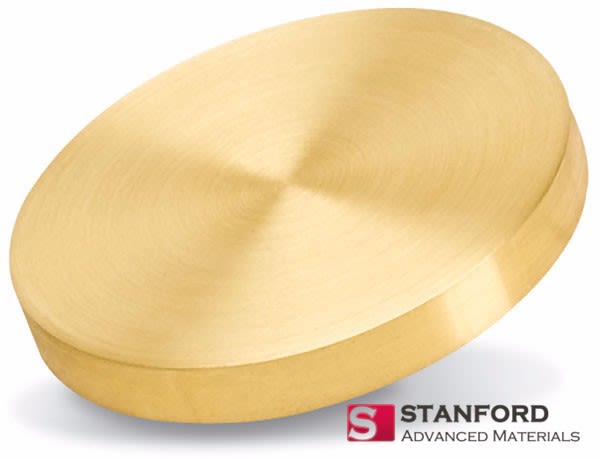With the recent launch of the new generation iPhone X, iphone has once again become the focus of the market. Many people do not know that in the production of iphone display, the core material for the LCD screen to achieve touch is indium tin oxide (ITO) target.
Indium tin oxide (ITO) is a ternary composition of indium, tin and oxygen in varying proportions. Depending on the oxygen content, it can either be described as a ceramic or alloy. Indium tin oxide is typically encountered as an oxygen-saturated composition with a formulation of 74% In, 18% O2, and 8% Sn by weight. Oxygen-saturated compositions are so typical, that unsaturated composition is termed oxygen-deficient ITO. It is transparent and colorless in thin layers, while in bulk form it is yellowish to grey. In the infrared region of the spectrum, it acts as a metal-like mirror. Indium tin oxide is obtained by mixing two oxides of indium trioxide and tin dioxide in a certain ratio, and tin dioxide generally accounts for 10% of the total weight.
Indium tin oxide conductive film is referred to as the "nerve" of the touch LCD screen. In the production process of the liquid crystal panel, the indium tin oxide target is placed in a vacuum environment, and is bombarded with an electron beam, and the generated particles are dispersed on the screen substrate to form a transparent indium tin oxide conductive film. Because of the existence of these conductive films, the liquid crystal display can sense the static electricity of the fingers and realize touch control. When the thickness of the film does not exceed a few hundred nanometers (one nanometer is one-billionth of a meter), 80% or more of visible light can be transmitted, so it does not greatly affect the transparency of glass or plastic. At the same time, this layer of indium tin oxide film has a strong electrical conductivity, and the resistivity can be as low as one ten-thousandth of an ohm•meter. The perfect combination of light transmission and electrical conductivity makes indium tin oxide the only choice for producing touch screens.
Sputtering targets are not only the core materials in the field of flat panel displays, but also widely used in solar cells, electrochromic functional films, infrared remote sensing detectors and other fields. At present, the innovative target atmospheric pressure sintering process solves the problem of high input cost of high-pressure sintering, poor technical stability, and difficulty in large-scale production. In addition, the major sputtering target companies have achieved large-scale, high-density and low-resistivity products, and are committed to improving core performance indicators such as relative density, purity and resistivity.
Nowadays, ITO targets are setting off a new round of enthusiasm, and ITO targets are being further expanded in the fields of high-end thin film transistor liquid crystal displays. For more information, please visit https://www.sputtertargets.net/.
Indium tin oxide (ITO) is a ternary composition of indium, tin and oxygen in varying proportions. Depending on the oxygen content, it can either be described as a ceramic or alloy. Indium tin oxide is typically encountered as an oxygen-saturated composition with a formulation of 74% In, 18% O2, and 8% Sn by weight. Oxygen-saturated compositions are so typical, that unsaturated composition is termed oxygen-deficient ITO. It is transparent and colorless in thin layers, while in bulk form it is yellowish to grey. In the infrared region of the spectrum, it acts as a metal-like mirror. Indium tin oxide is obtained by mixing two oxides of indium trioxide and tin dioxide in a certain ratio, and tin dioxide generally accounts for 10% of the total weight.
Indium tin oxide conductive film is referred to as the "nerve" of the touch LCD screen. In the production process of the liquid crystal panel, the indium tin oxide target is placed in a vacuum environment, and is bombarded with an electron beam, and the generated particles are dispersed on the screen substrate to form a transparent indium tin oxide conductive film. Because of the existence of these conductive films, the liquid crystal display can sense the static electricity of the fingers and realize touch control. When the thickness of the film does not exceed a few hundred nanometers (one nanometer is one-billionth of a meter), 80% or more of visible light can be transmitted, so it does not greatly affect the transparency of glass or plastic. At the same time, this layer of indium tin oxide film has a strong electrical conductivity, and the resistivity can be as low as one ten-thousandth of an ohm•meter. The perfect combination of light transmission and electrical conductivity makes indium tin oxide the only choice for producing touch screens.
Sputtering targets are not only the core materials in the field of flat panel displays, but also widely used in solar cells, electrochromic functional films, infrared remote sensing detectors and other fields. At present, the innovative target atmospheric pressure sintering process solves the problem of high input cost of high-pressure sintering, poor technical stability, and difficulty in large-scale production. In addition, the major sputtering target companies have achieved large-scale, high-density and low-resistivity products, and are committed to improving core performance indicators such as relative density, purity and resistivity.
Nowadays, ITO targets are setting off a new round of enthusiasm, and ITO targets are being further expanded in the fields of high-end thin film transistor liquid crystal displays. For more information, please visit https://www.sputtertargets.net/.


















